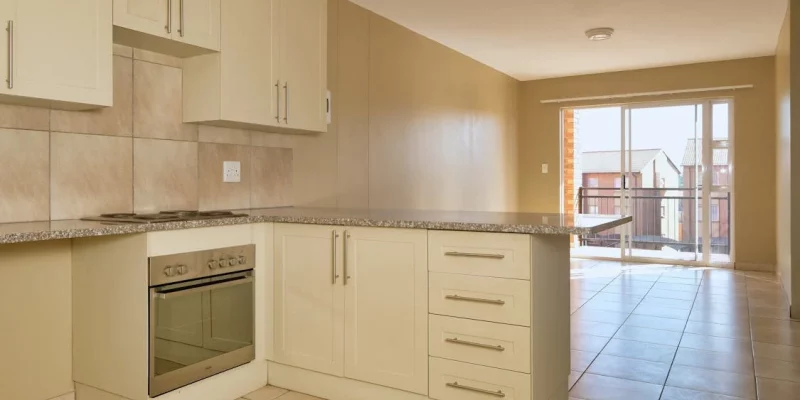Trends in home decor often come full circle, bringing back elements from the past with a fresh, modern twist. One such revival is the return of tile countertops.
Once a staple in mid-20th-century kitchens, tile countertops are experiencing a resurgence. But what’s fueling this comeback, and how can you embrace this trend in your home? Let’s dive in.
Tile countertops gained popularity in the 1940s and 1950s, celebrated for their versatility and variety. Homeowners could choose from a wide array of colors, patterns, and materials, making tile an attractive option for creating personalized kitchen and bathroom spaces.
However, as materials like laminate, granite, and quartz emerged, tile countertops fell out of favor due to concerns about durability and maintenance.
Why Tile Countertops Are Trending Again
Today, tile countertops are making a stylish return for several reasons:
- Aesthetic Versatility: There are a wide range of zellige tile color options plus styles, from classic subway tiles to intricate mosaics and bold geometric patterns. This allows homeowners to create unique, eye-catching surfaces that can stand out as focal points in kitchens and bathrooms.
- Eco-Friendliness: With a growing emphasis on sustainability, tile countertops are an eco-friendly choice. Many tiles are made from recycled materials, and their durability means they don’t need to be replaced as often, reducing waste.
- Personalization: Tile countertops offer endless customization possibilities. Homeowners can mix and match different tiles to create patterns that reflect their personal style, making each countertop truly unique.
- Affordability: Compared to pricier materials like granite and quartz, tile countertops can be a more budget-friendly option, making them an attractive choice for cost-conscious renovators.
Practical Tips for Tile Countertops
While tile countertops have many benefits, there are a few practical aspects to consider:
- Maintenance: Grout lines between tiles can stain and harbor bacteria if not properly sealed and maintained. Advances in grout technology, such as stain-resistant and antimicrobial grouts, have made it easier to keep these areas clean. Regularly sealing the grout and using a pH-balanced cleaner can help maintain a fresh and hygienic surface. Additionally, choosing a darker grout can help hide stains and reduce the appearance of dirt over time.
- Durability: While tiles are generally durable, they can chip or crack if heavy objects are dropped on them. Selecting high-quality, dense tiles and ensuring proper installation can enhance their durability. It’s also wise to keep a few extra tiles on hand for easy replacement if damage occurs. Using a cutting board and avoiding dropping heavy items can prevent damage and prolong the life of your tile countertop.
- Installation: Proper installation is crucial for a beautiful and long-lasting tile countertop. This involves ensuring that the substrate is level, using the right adhesive, and aligning the tiles accurately. Hiring a professional can ensure that grout lines are even and tiles are perfectly aligned, which is essential for both aesthetics and durability. A professional installer will also properly seal the grout and tiles, providing a finished product that is both attractive and functional.
- Heat Resistance: Tile countertops are generally heat resistant, making them a good choice for kitchens. However, the grout lines may not be as heat resistant as the tiles themselves. Using trivets and hot pads can help protect the surface from extreme temperature changes that might damage the grout or cause tiles to crack.
- Design Flexibility: The variety of tile shapes, sizes, and colors allows for a high degree of customization. Consider mixing different tile types to create a unique pattern or design. You can also incorporate decorative tiles or mosaics to add visual interest. Planning your design carefully before installation can help achieve the desired aesthetic and ensure that the layout complements your overall kitchen or bathroom decor.
- Cost: Tile countertops can be a cost-effective option compared to materials like granite or quartz. However, costs can vary widely depending on the type of tile chosen and the complexity of the installation. Budgeting for professional installation and any additional materials, such as grout sealant and special cleaning products, can help manage costs effectively.
- Environmental Impact: Many tiles are made from recycled materials, making them an eco-friendly choice. Opting for locally sourced tiles can further reduce the environmental impact associated with transportation. Additionally, the long lifespan of tile countertops means they do not need to be replaced as frequently, reducing overall waste.
By considering these practical tips, you can enjoy the aesthetic and functional benefits of tile countertops while minimizing potential downsides.
How to Incorporate Tile Countertops in Your Home
If you’re thinking about jumping on the tile countertop trend, here are some tips to get you started:
- Choose the Right Tile: Match the tile to your kitchen or bathroom’s overall style. For a classic look, consider using subway tiles or neutral tones. If you prefer a modern or eclectic vibe, explore bold colors, unique patterns, and unconventional shapes. Make sure the tiles complement your existing decor and create the desired aesthetic.
- Mix and Match: Don’t be afraid to experiment with different tile sizes and shapes. Combining various tiles can add depth and visual interest to your countertop design. For instance, you can use larger tiles for the main surface and smaller, decorative tiles for borders or accents. This approach allows you to create a dynamic and personalized look.
- Add Accent Features: Use tiles to create accent features that enhance your space. Consider extending a tiled backsplash onto the countertop for a seamless, cohesive look. You can also incorporate decorative tile borders or inlays that add a splash of color and personality. These accents can serve as focal points and elevate the overall design.
- Plan for Maintenance: Develop a maintenance plan to keep your tile countertops looking their best. Regularly clean the surface with a pH-balanced cleaner to avoid damaging the tiles and grout. Seal the grout periodically to prevent staining and protect against moisture. Using cutting boards and avoiding dropping heavy items on the countertop can also help maintain its appearance and durability.
- Coordinate with Other Elements: Ensure that your tile countertops harmonize with other elements in your kitchen or bathroom, such as cabinetry, flooring, and fixtures. Coordinating colors and styles can create a cohesive and visually appealing space. For instance, if you have wooden cabinets, you might choose tiles that complement the wood’s tone and texture.
- Consider Edge Treatments: Pay attention to the edges of your tile countertops. Bullnose tiles, which have rounded edges, can give a polished and finished look to your countertops. Alternatively, metal or wood trims can be used to create a contrasting edge that adds a modern touch.
- Budget Wisely: While tile countertops can be more affordable than other materials, costs can vary based on the type of tile and the complexity of the design. Set a budget that includes the cost of tiles, installation, and any additional materials. This ensures you can achieve the look you want without overspending.
Conclusion
Tile countertops are definitely making a stylish comeback. They offer a blend of nostalgia, customization, and modern appeal that can transform your kitchen or bathroom. Whether you’re planning a full renovation or just a small update, tile countertops can add a unique and personal touch to your home. With the right choices and care, tile countertops can be a beautiful and practical addition to any space, proving that old trends can indeed become new again.




















